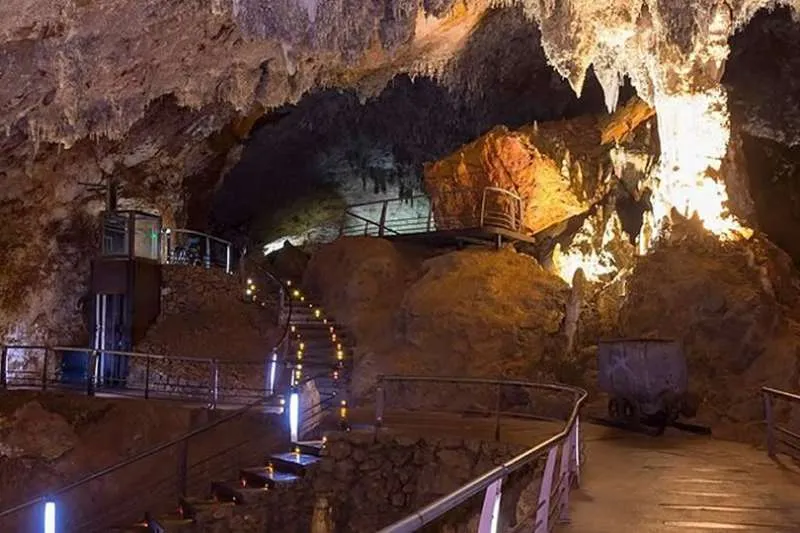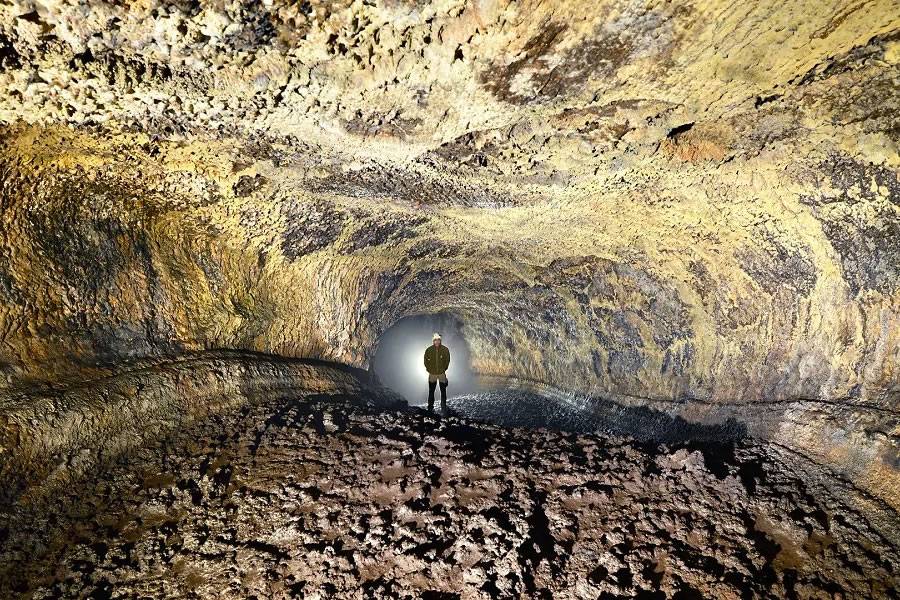Cueva del Viento: The longest Volcanic Cave in Europe found in Tenerife
- 18-11-2024
- Travel
- Canarian Weekly
- Photo Credit: Museos de Tenerife
The Cueva del Viento, located in the municipality of Icod de los Vinos in Tenerife, is Europe's longest volcanic tube, stretching an impressive 18 kilometres underground. Formed approximately 27,000 years ago during the first eruption of the Pico Viejo volcano near Teide, it stands as a testament to the island’s volcanic history and a geologic marvel. Globally, only a few volcanic galleries in Hawaii surpass its length.
This underground labyrinth, rediscovered and thoroughly explored in the 1970s after being known to the Guanches 2,000 years ago, takes its name from the air currents that flow through its dark, silent chambers. Visitors often describe its atmosphere as distinctly prehistoric.
The Cueva del Viento is a showcase of geological artistry, featuring lateral terraces formed by stabilised lava flows, cascading lava structures connecting upper and lower tubes, and unique formations such as stalactite-like drops known as stafilitos. The cave also houses jameos (collapsed sections) and hardened lava lakes, offering a natural museum of volcanic phenomena.
A Global Geological Treasure
Beyond its geological significance, the Cueva del Viento serves as a vital biological research site. The cave hosts an ecosystem rich in biodiversity, with about 190 identified species, most of which are invertebrates. Among these, 44 are troglobites, organisms specifically adapted to subterranean life. Remarkably, 15 species discovered within the cave are new to science, including the eyeless cockroach (Loboptera subterranea) and two ground beetles, Wolltinerfia martini and Wolltinerfia tenerifae.
The cave has also yielded fossilised remains of now-extinct vertebrates, including the giant lizard (Gallotia goliath), the giant rat (Canariomys bravoi), and the long-legged bunting (Emberiza alcoveri), a species unique to the cave. Other significant finds include bones of extinct birds like the Canary quail and the graja, a crow now found only on La Palma.
The Cueva del Viento also features distinct vegetation zones, transitioning from external areas with vascular plants, ferns, and lichens to the entrance zone, where mosses and lichens thrive in indirect sunlight. Deeper within, the transition zone harbours cyanophyte algae and other light-sensitive species.
The Cueva del Viento is not only a source of fascination for geologists and biologists but also a symbol of Tenerife’s rich natural heritage. As one of the world’s most significant volcanic tubes, it attracts scientists and visitors alike, offering an unparalleled glimpse into the island's volcanic origins and its unique subterranean life.

Other articles that may interest you...
Trending
Most Read Articles
Featured Videos
A Vision of Elvis Tenerife Promo
- 10-05-2025
Tenerife Travel Guide
- 13-12-2024
Live webcam from Lanzarote airport
- 13-12-2024




























































